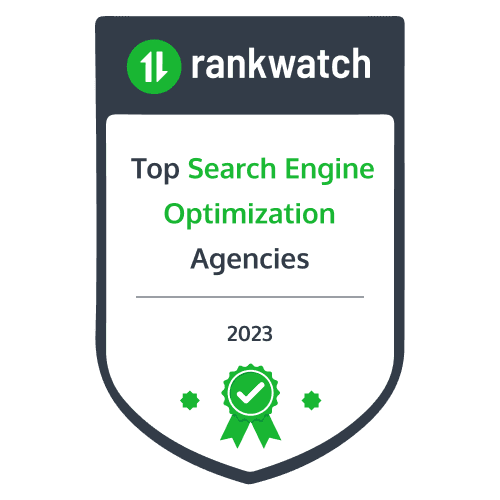In today’s digital age, where data is abundant, and customer behavior constantly evolves, businesses need to leverage the power of marketing analytics to stay ahead of the competition. Marketing analytics measures manages, and analyzes marketing performance data to gain valuable insights that can drive strategic decisions and improve overall business outcomes. By harnessing the power of data, marketing analytics can transform your digital strategy and unlock new growth opportunities.

The importance of marketing analytics in digital strategy
Marketing analytics plays a crucial role in shaping a successful digital strategy. It provides businesses with the tools and insights needed to understand their target audience, identify trends, and measure the effectiveness of their marketing efforts. Businesses can better understand customer needs and preferences by analyzing data from various sources, such as website traffic, social media engagement, and customer interactions.
This valuable information allows businesses to tailor their marketing campaigns to target specific customer segments, create personalized experiences, and drive customer engagement. Marketing analytics also allows businesses to track the performance of their marketing initiatives in real time, enabling them to make data-driven decisions and optimize their strategies for maximum impact.
Key metrics and data sources for marketing analytics
To effectively utilize marketing analytics, businesses must identify the key metrics and data sources relevant to their goals. Some common metrics include:
- Conversion Rate: This metric measures the percentage of website visitors who complete a desired action, such as purchasing or filling out a form. It helps businesses understand the effectiveness of their website and marketing campaigns in driving conversions.
- Customer Lifetime Value (CLV): CLV is a metric that predicts the revenue a business can expect to generate from a single customer over their entire relationship. It helps businesses identify their most valuable customers and allocate resources accordingly.
- Customer Acquisition Cost (CAC): CAC measures acquiring a new customer. By comparing CAC to CLV, businesses can assess the profitability of their marketing initiatives and optimize their acquisition strategies.
Data sources for marketing analytics can include customer relationship management (CRM) systems, web analytics tools, social media platforms, and email marketing software. By integrating data from these sources, businesses can gain a holistic view of their marketing performance and make informed decisions.
How to set up a marketing analytics framework


Setting up a marketing analytics framework involves several steps:
- Define your goals: Clearly articulate the objectives of your digital strategy and identify the key performance indicators (KPIs) that align with these goals. This will help you measure the success of your marketing initiatives and track progress over time.
- Identify data sources: Determine which are relevant to your goals and integrate them into a centralized analytics platform. This will allow you to collect and analyze data from multiple channels and comprehensively view your marketing performance.
- Implement tracking mechanisms: Set up tracking codes, pixels, and other measurement tools to capture data from your website, social media platforms, and other digital channels. This will enable you to collect accurate and reliable data for analysis.
- Analyze and interpret data: Use data visualization and reporting tools to analyze your marketing data and extract meaningful insights. Look for trends, patterns, and correlations that can inform your decision-making process and drive strategic actions.
- Continuously optimize: Review and refine your marketing analytics framework to ensure it aligns with your evolving business goals. Use A/B testing, experimentation, and iteration to improve the effectiveness of your marketing campaigns and drive better results.
By following these steps, businesses can establish a robust marketing analytics framework that empowers them to make data-driven decisions and achieve their digital marketing objectives.
Analyzing customer behavior with marketing analytics
Understanding customer behavior is essential for developing effective marketing strategies. Marketing analytics provides businesses with valuable insights into how customers engage with their brand, which can inform the creation of targeted campaigns and personalized experiences.
Businesses can identify patterns, preferences, and pain points by analyzing customer behavior data. For example, they can determine which marketing channels are most effective in driving customer engagement, which products or services are most popular, and which touchpoints in the customer journey need improvement.
Marketing analytics also enables businesses to segment their customer base and create personas based on demographic, psychographic, and behavioral characteristics. This allows for more personalized marketing messages and experiences, increasing the likelihood of conversion and customer loyalty.
Using marketing analytics to optimize campaigns and conversion rates


Marketing analytics is a powerful tool for optimizing marketing campaigns and improving conversion rates. By analyzing data on campaign performance, businesses can identify which channels, messages, and creative assets are driving the best results. They can then allocate their marketing budget and resources accordingly to maximize ROI.
Additionally, marketing analytics allows businesses to track the entire customer journey, from initial awareness to final purchase. By analyzing conversion funnels, businesses can identify bottlenecks and drop-off points and optimize their marketing initiatives to reduce friction and improve the customer experience.
A/B testing is another valuable technique enabled by marketing analytics. Businesses can gather data on the best versions by testing different marketing asset variations, such as landing pages, emails, or ad copy. This data-driven approach allows for continuous optimization and improvement of marketing campaigns.
Case study: Netflix
Netflix is a prime example of a company successfully leveraging marketing analytics to transform its digital strategy. By analyzing user data, Netflix can recommend highly personalized content to its subscribers, increasing customer satisfaction and engagement.
To create personalized content suggestions, Netflix’s recommendation algorithm analyzes user viewing habits, ratings, and preferences data. This data-driven approach has contributed to the company’s success in retaining customers and driving subscriptions.
Furthermore, Netflix uses marketing analytics to optimize its content acquisition strategy. By analyzing viewer data, such as which genres or actors are most popular, Netflix can make data-driven decisions on which shows and movies to invest in. This has allowed Netflix to create a vast library of content that appeals to its target audience.
Case study: Progressive Insurance
Progressive Insurance is another company that has effectively utilized marketing analytics to drive business growth. By analyzing customer data, Progressive can create personalized insurance quotes tailored to individual customers’ needs.
Progressive’s Snapshot program collects data on customers’ driving habits through a small device installed in their vehicles. The data collected, such as driving speed, distance traveled, and time of day, is analyzed to determine each customer’s risk profile. This data-driven approach allows Progressive to offer personalized insurance quotes that reflect the individual’s driving behavior.
By leveraging marketing analytics, Progressive has attracted and retained customers by offering competitive and personalized insurance rates. This data-driven strategy has set Progressive apart from its competitors and contributed to its success in the insurance industry.
Case study: Lenovo
Lenovo, a leading technology company, has also embraced marketing analytics to enhance its digital strategy. By analyzing customer data, Lenovo can identify trends and preferences, enabling them to develop targeted marketing campaigns.
One example of Lenovo’s successful use of marketing analytics is its “Users Know Best” campaign. By analyzing social media data, Lenovo identified a segment of customers who were highly engaged and vocal about their positive experiences with Lenovo products. The company leveraged this data to create a campaign highlighting these real-life user stories, increasing brand advocacy and customer loyalty.
Furthermore, Lenovo uses marketing analytics to optimize its website and online shopping experience. By analyzing website traffic data, user behavior, and conversion rates, Lenovo can identify areas for improvement and make data-driven changes to its website design and user interface. This has resulted in an improved user experience and increased conversion rates for the company.
Tools and software for marketing analytics


Several tools and software solutions are available to help businesses implement and leverage marketing analytics. These include:
- Google Analytics: A widely used web analytics tool that provides businesses detailed information about website traffic, user behavior, and conversion rates.
- Adobe Analytics: A comprehensive analytics platform that allows businesses to track and analyze data from multiple sources, including websites, mobile apps, and offline channels.
- HubSpot: A marketing automation platform that includes analytics features to track and measure the effectiveness of marketing campaigns, lead generation, and customer engagement.
- Tableau: A data visualization tool enabling businesses to create interactive dashboards and reports, making analyzing and interpreting marketing data easier.
- Salesforce: A customer relationship management (CRM) platform with analytics capabilities to track customer interactions, sales performance, and marketing campaigns.
These tools, among many others, provide businesses with the necessary infrastructure to collect, analyze, and visualize marketing data, empowering them to make data-driven decisions and optimize their digital strategies.
The future of marketing analytics
As technology continues to advance and customer expectations evolve, the future of marketing analytics holds exciting possibilities. Here are some trends to watch out for:
- Artificial Intelligence (AI) and Machine Learning: AI and machine learning algorithms have the potential to revolutionize marketing analytics. These technologies can process vast amounts of data and uncover insights that would be difficult for humans to discover. They can also automate repetitive tasks and enable real-time decision-making.
- Predictive Analytics: Predictive analytics uses historical data to predict future events or outcomes. By leveraging machine learning algorithms, businesses can anticipate customer behavior, identify trends, and make proactive marketing decisions.
- Data Privacy and Ethics: As data privacy concerns grow, businesses must navigate the ethical and legal implications of collecting and using customer data. Transparency and consent will become even more critical, and businesses must invest in secure data storage and compliance with privacy regulations.
- Integration of Offline and Online Data: The future of marketing analytics lies in integrating data from online and offline channels. By combining data from point-of-sale systems, customer service interactions, and digital touchpoints, businesses can gain a more holistic view of their customers and deliver seamless experiences across all channels.
Conclusion


Marketing analytics is a powerful tool that can transform your digital strategy and drive business growth. By harnessing the power of data, businesses can gain valuable insights into customer behavior, optimize their marketing campaigns, and make data-driven decisions. The case studies of Netflix, Progressive Insurance, and Lenovo demonstrate the effectiveness of marketing analytics in driving business success.
As technology continues to advance, the future of marketing analytics holds even greater potential. Artificial intelligence, predictive analytics, and offline and online data integration will shape how businesses leverage data to gain a competitive advantage.
To stay ahead in the digital age, businesses must embrace marketing analytics as an integral part of their digital strategy. Businesses can unlock the power of data and transform it into dollars by investing in the right tools, setting up a robust analytics framework, and continuously optimizing their marketing initiatives.
So, what are you waiting for? Start harnessing the power of marketing analytics today and take your digital strategy to new heights. If you need any assistance, Markitome is here to help you!



We hope you’re enjoying reading our blogs… Don’t forget to secure your browsing experience with Nord VPN. Click the banner below to learn more
More To Explore
Redefining Digital Marketing in 2024: 10 Game-Changing Trends
In the ever-evolving world of digital marketing, staying ahead of the curve is essential. As we approach 2024, it’s crucial to be aware of the
SEO Mania-7 Proven Strategies for Explosive SEO Growth in 2024
Understanding the Importance of SEO in 2024 In the ever-evolving world of SEO, staying ahead of the curve is crucial to your online success. As